Igor Loi
Vega: A 10-Core SoC for IoT End-Nodes with DNN Acceleration and Cognitive Wake-Up From MRAM-Based State-Retentive Sleep Mode
Oct 18, 2021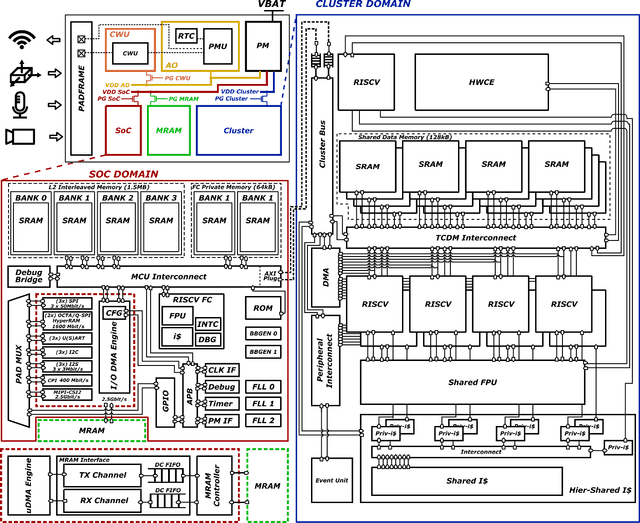
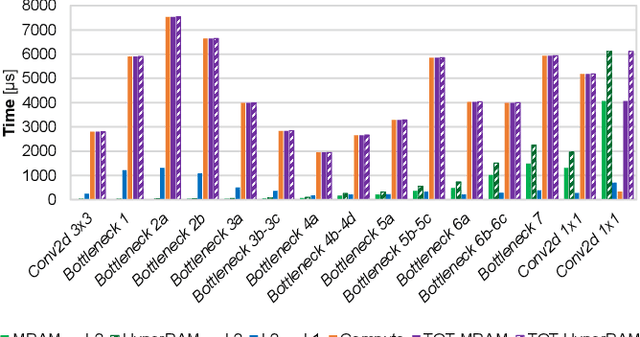

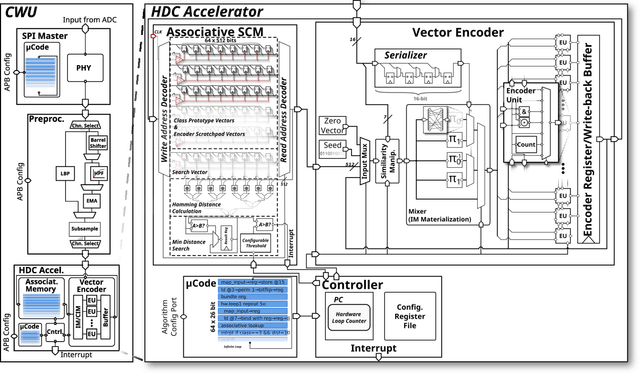
Abstract:The Internet-of-Things requires end-nodes with ultra-low-power always-on capability for a long battery lifetime, as well as high performance, energy efficiency, and extreme flexibility to deal with complex and fast-evolving near-sensor analytics algorithms (NSAAs). We present Vega, an IoT end-node SoC capable of scaling from a 1.7 $\mathrm{\mu}$W fully retentive cognitive sleep mode up to 32.2 GOPS (@ 49.4 mW) peak performance on NSAAs, including mobile DNN inference, exploiting 1.6 MB of state-retentive SRAM, and 4 MB of non-volatile MRAM. To meet the performance and flexibility requirements of NSAAs, the SoC features 10 RISC-V cores: one core for SoC and IO management and a 9-cores cluster supporting multi-precision SIMD integer and floating-point computation. Vega achieves SoA-leading efficiency of 615 GOPS/W on 8-bit INT computation (boosted to 1.3TOPS/W for 8-bit DNN inference with hardware acceleration). On floating-point (FP) compuation, it achieves SoA-leading efficiency of 79 and 129 GFLOPS/W on 32- and 16-bit FP, respectively. Two programmable machine-learning (ML) accelerators boost energy efficiency in cognitive sleep and active states, respectively.
An IoT Endpoint System-on-Chip for Secure and Energy-Efficient Near-Sensor Analytics
Apr 23, 2017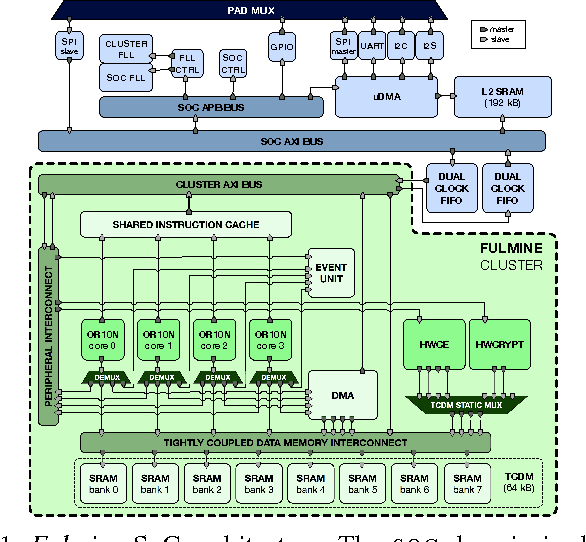


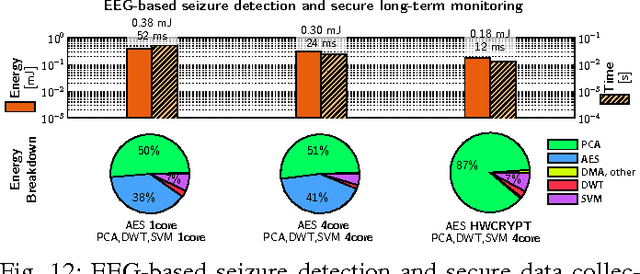
Abstract:Near-sensor data analytics is a promising direction for IoT endpoints, as it minimizes energy spent on communication and reduces network load - but it also poses security concerns, as valuable data is stored or sent over the network at various stages of the analytics pipeline. Using encryption to protect sensitive data at the boundary of the on-chip analytics engine is a way to address data security issues. To cope with the combined workload of analytics and encryption in a tight power envelope, we propose Fulmine, a System-on-Chip based on a tightly-coupled multi-core cluster augmented with specialized blocks for compute-intensive data processing and encryption functions, supporting software programmability for regular computing tasks. The Fulmine SoC, fabricated in 65nm technology, consumes less than 20mW on average at 0.8V achieving an efficiency of up to 70pJ/B in encryption, 50pJ/px in convolution, or up to 25MIPS/mW in software. As a strong argument for real-life flexible application of our platform, we show experimental results for three secure analytics use cases: secure autonomous aerial surveillance with a state-of-the-art deep CNN consuming 3.16pJ per equivalent RISC op; local CNN-based face detection with secured remote recognition in 5.74pJ/op; and seizure detection with encrypted data collection from EEG within 12.7pJ/op.
 Add to Chrome
Add to Chrome Add to Firefox
Add to Firefox Add to Edge
Add to Edge